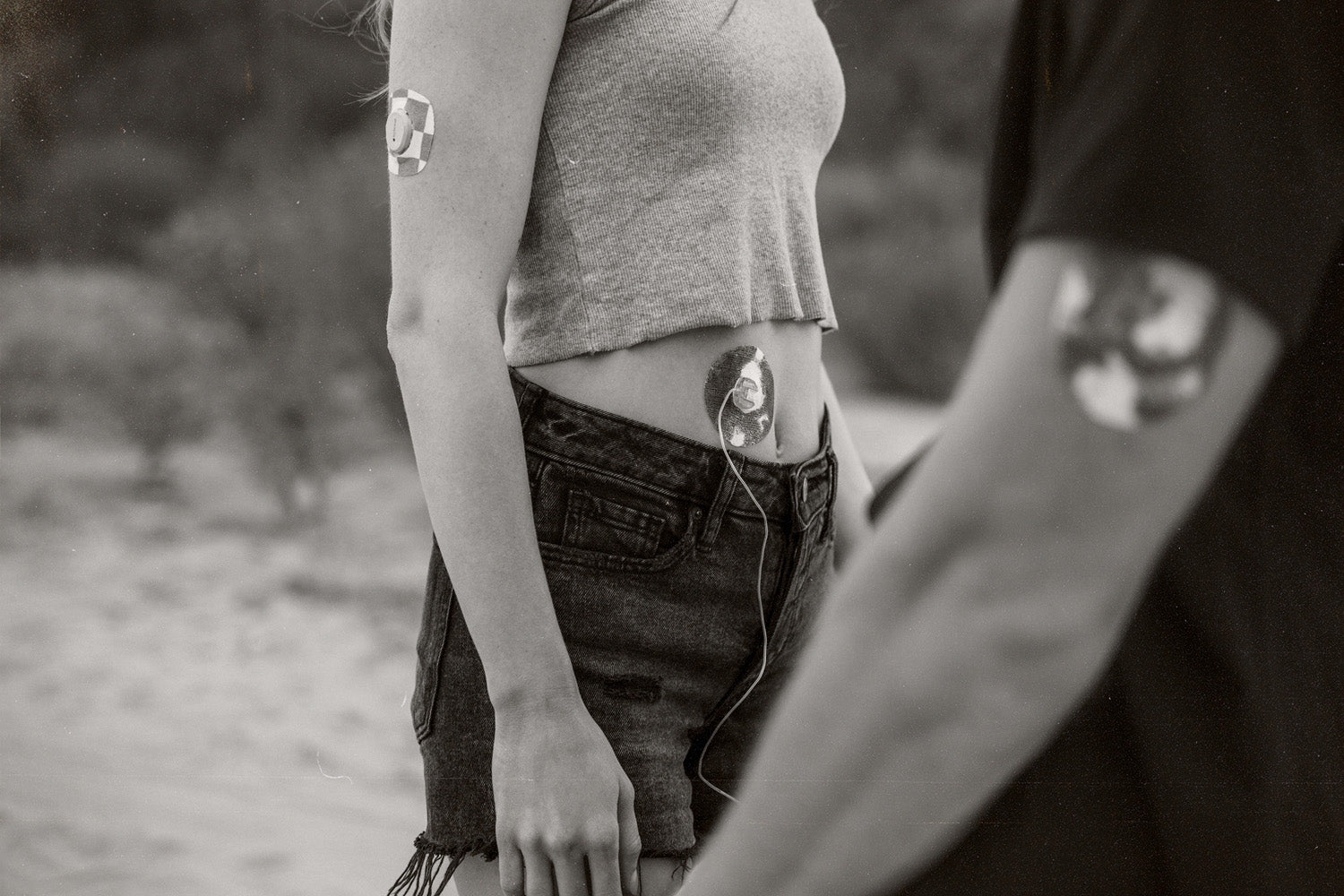Disclaimer: All content and information in this blog is for informational and educational purposes only. For the latest information, please visit the manufacturer’s website. Last updated on 7/8/25.
Strap in - because managing diabetes at an amusement park is a rollercoaster in more ways than one. Between adrenaline-pumping rides, deep-fried everything on a stick, and the chaos of racing across the park only to wait in line for 90 minutes, you’ll need more than just a park map to have a safe and enjoyable experience.
Common Diabetes Management Challenges at Amusement Parks
The unpredictable mix of activity levels, limited food choices, and ever-changing environments at theme parks with diabetes can throw your usual diabetes routine and blood sugars for a loop.
Mixed Activity Levels
Spending the day at an amusement park means alternating between hours of walking and long stretches of standing in lines or sitting at shows. That stop-and-go rhythm can make it tough to predict how your blood sugars will respond.
Keep a closer eye on your blood sugars throughout the day and don’t forget to pack plenty of low snacks in easily accessible spots.
Insider Tip: If you use an insulin pump, try switching to exercise mode or setting a temporary basal rate based on your blood sugar levels.
Limited Food Choices
Funnel cakes, corn dogs, cotton candy…theme park food smell irresistible, but they are often carb-heavy with little protein. And while they may come in handy during a low blood sugar or serve as a much anticipated sweet treat, it always helps to carry protein bars, beef sticks, or other snacks to balance out the glycemic load.
Insulin Pump & CGM Risks on Rides
High-speed roller coasters and thrill rides sometimes come with warnings to remove medical devices due to high speeds, pressure changes or magnetic interference.
Check with your insulin pump or CGM manufacturer to know what’s safe. Secure your diabetes devices with an overpatch to keep them protected. If needed, disconnect your pump briefly before certain rides– just be sure to reconnect right after!
Heat Exposure & Insulin Spoilage
Extreme heat temperatures can quickly spoil insulin and compromise diabetes device adhesive.
Store insulin in a cooling pouch or ask first aid to keep it in the fridge for you. Add an overpatch before heading out to the amusement park so your device stays in place all day and night.
Essential Diabetes Supplies for Theme Parks
This is not the day to pack light. A well-stocked diabetes bag is your best ride companion.
-
Your Diabetes Medications & Devices
- Insulin & Oral Medications: Pack enough for the entire day, plus a little extra. Delays happen and you want to be prepared!
- Extra Insulin Pump Supplies: Toss in an extra infusion set, reservoir, and either batteries or your pump’s charger.
-
Glucose Monitoring Supplies
- Continuous Glucose Monitor Users: Bring your CGM receiver or your phone. Pack an extra sensor just in case yours fails, plus adhesive patches to keep everything in place.
- Glucose Meter & Test Strips: Whether or not you are a CGM user, bring a meter and test strips as a backup.
-
Hypoglycemia Treatment
- Fast-Acting Carbs: Pack plenty of fast-acting carbs for potential low blood sugars. Always pack more than you think you’ll need!
- Emergency Glucagon: If prescribed, pack your glucagon and that anyone with you knows how to use it in case of an emergency.
-
Insulated Protection for Insulin
- Insulin Cooling Case: Theme parks can get hot! Protect your insulin from heat by using a Frio Cooling Wallet or a small insulated bag with gel packs.
-
Miscellaneous Must-Haves
- Medical ID
- Emergency Contact Information
- Extra Snacks
- Water Bottle
- Portable Charger & Power Bank
Pro-Tip: Check the amusement park’s policies on outside food, drinks and medical supplies before you go. A quick heads-up can save you from any headache or hassle at the gate.
Amusement Park Disability Pass for Diabetics
While not all amusement parks offer specific “diabetic” disability passes, many do provide accommodations for guests with disabilities, including those with diabetes. Before your visit, it’s a good idea to contact Guest Services or review the park’s Disability Access service (DAS) or equivalent program online. These programs often include several helpful diabetes-friendly accommodations, such as:
Disability Access Line
With a disability access line, you can enter through a different line or a designated ride entrance that often involves shorter or shaded wait areas. This allows you to step away for a snack, test your blood sugar or give insulin without needing to leave your place in line.
Return Time Pass
A return time pass functions as a virtual reservation system. Rather than waiting in a long-line, you’re given a designated return window to come back and enjoy the ride with little to no wait. This option gives you the freedom to monitor your blood sugar, hydrate or even take a break while waiting for your turn.
Lockers for Diabetes & Medical Supplies
Amusement parks understand the importance of keeping diabetes and medical supplies accessible during your visit. Many parks offer medical lockers or special storage areas with the ride attendant so you’re only apart from your diabetes essentials for a short time– just minutes or even seconds!
Outside Food & Drink Exceptions:
Even at parks where outside food and drinks are normally restricted, most make expectations for medical needs. Guests with diabetes are typically allowed to carry low snacks, such as juice boxes, glucose tables, fruit snacks and other snack options.































